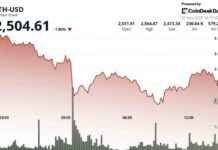A few years back, everyone was super excited about spot Bitcoin ETFs. They were supposed to be the big breakthrough that would bring crypto into the mainstream financial world. And for a hot minute, it looked like they were actually going to change the investing game. With a bunch of approvals and billions of institutional dollars pouring in, it seemed like ETFs were going to be the next big thing.
ETFs made it super easy for big institutions to get in on the Bitcoin (BTC) and Ethereum (ETH) action without dealing with all the headache of private keys and custody issues. But here’s the kicker: they pretty much only track price. So when the crypto market is just chillin’ and not doing much, ETF returns can end up stalling too. Kind of a bummer, right? It’s like trying to use a hammer when you really need a Swiss Army knife.
As more big players jump on the crypto train, they’re starting to want more bang for their buck. They’re not satisfied with just watching the prices go up and down. They want more. That’s where exchange-traded notes (ETNs) come in. These babies offer exposure to a bunch of different crypto assets, like staking-based tokens and DeFi portfolios. They’re blowing up in Europe, where you can find products tracking staking rewards, diversified crypto portfolios, and structured derivatives.
But wait, there’s more. Europe is all about that regulatory life, especially with the Markets in Crypto-Assets Regulation (MiCA) that kicked in recently. MiCA lays down the law when it comes to how digital assets are issued, operated, and marketed. It’s like having a cool, organized friend who keeps everyone in check at a party. This regulation addresses the main worry about ETNs: credit risk. Under MiCA, issuers have to meet higher capital requirements and show that they’re playing by the rules. This helps ease concerns about things going south, giving institutional money some peace of mind.
On the flip side, the United States isn’t quite as gung-ho about this whole ETN thing. The Securities and Exchange Commission (SEC) is playing it safe, which means American investors might be missing out on some sweet crypto opportunities. It’s like being the kid who can’t join in on the fun because your mom said so. This divide could be a sign of a bigger shift, where investors are looking for more than just a piece of the Bitcoin pie. They want a taste of the action with staking rewards and DeFi fees. ETFs are cool and all, but they can’t offer those extra perks that ETNs bring to the table.
Critics of ETNs might say they’re too risky or not liquid enough. They might warn about credit risks and sketchy smart contracts. But hey, people are still flocking to ETNs, showing that they’re willing to take on these challenges for a shot at some steady returns. ETFs did their part in making crypto more legit for the big guns in finance. But now, ETNs are stepping up to the plate, offering a more dynamic way to play the crypto game. It’s like ETFs set the stage, and ETNs are ready to steal the show.
In the end, the future of the crypto market is all about finding products that go beyond just betting on prices. Institutions want diversity and yields. Regulators want transparency. ETNs might not be perfect, but they seem to strike a better balance between these needs. With Europe leading the charge on regulations and investors hungry for returns, ETNs are looking like the go-to choice for serious crypto investors. So, if you want to ride the wave of digital finance with style, ETNs might just be your ticket to the big leagues.














